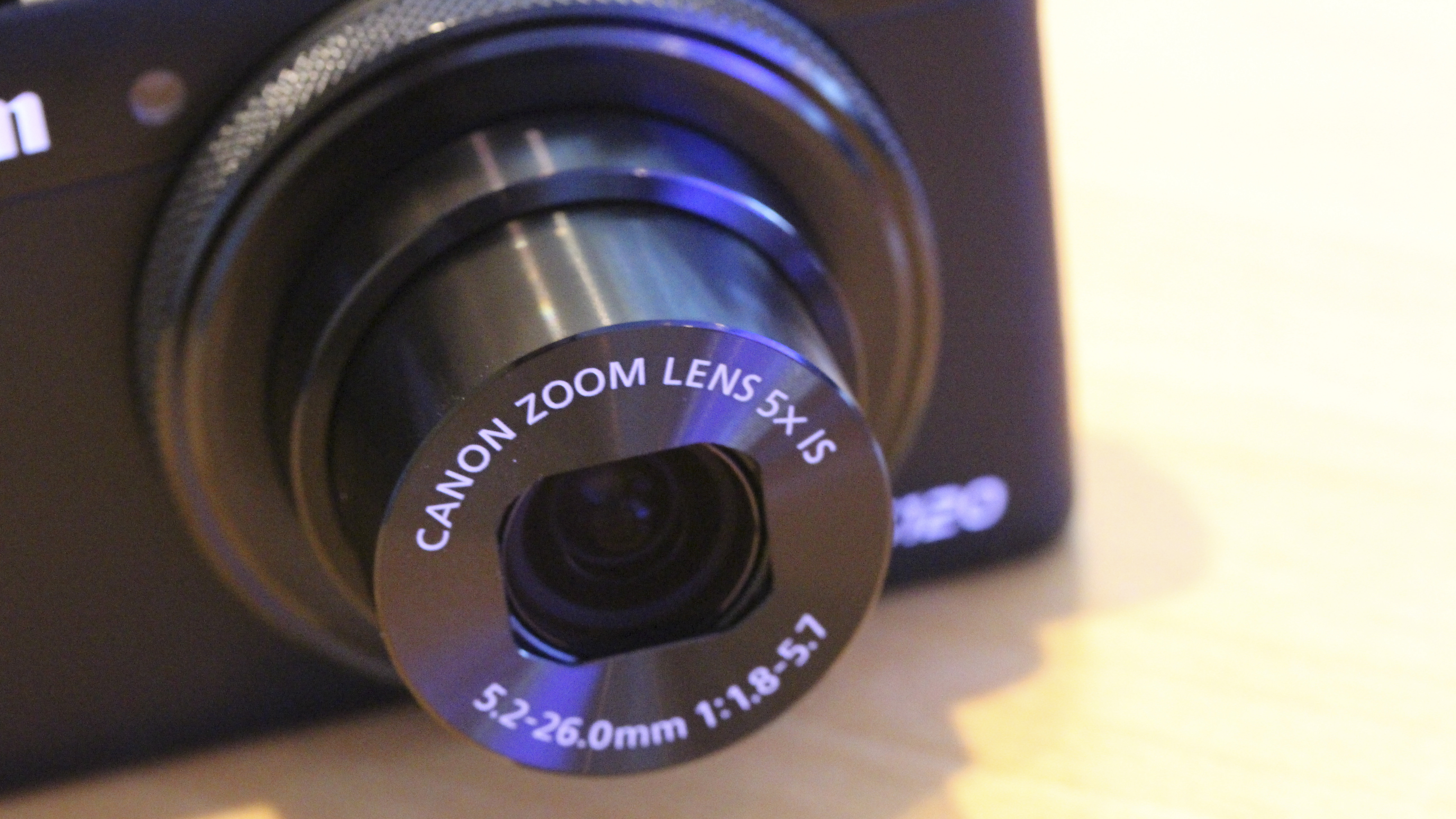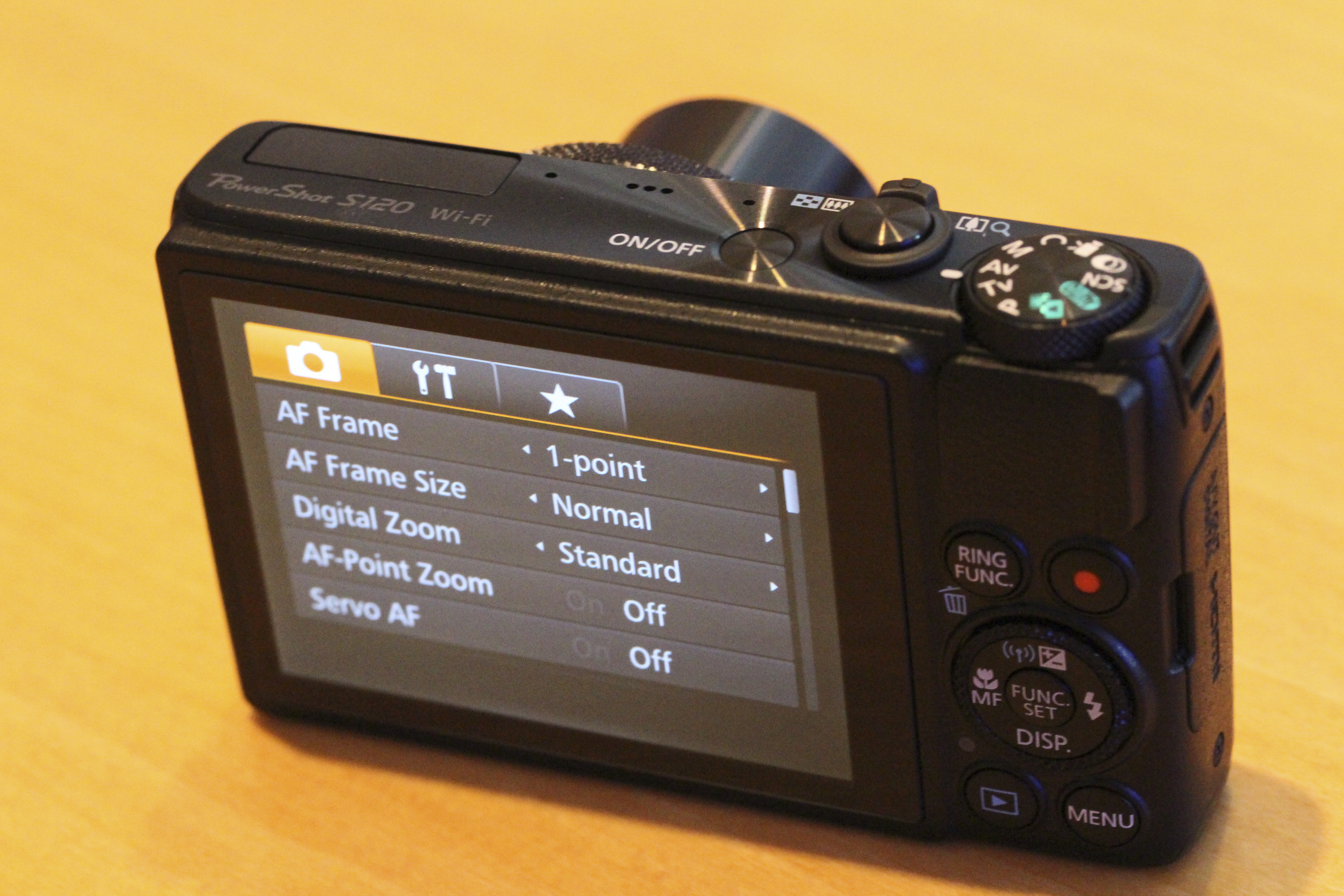Why you can trust TechRadar
As previously mentioned, the build and design is almost identical to the S110, although the top plate now features a shinier material, giving it an even more premium feel.
The S120 feels reassuringly weighty despite its small size, with the sleek black exterior giving it a classy air.
On top of the camera is a mode dial for quickly switching between the different exposure modes available, including fully automatic, scene, digital filters, semi-automatic (shutter priority and aperture priority) and fully manual. Unlike on the G16, there's no dial up top for changing exposure compensation.
The well-liked control ring around the lens reappears here on the S120. This is such a popular feature of the camera that we've since seen very similar controls appearing on other cameras in the premium compact territory. The ring can be customised to control different settings, depending on what you prefer to use most often. Traditionalists may like to set it to control aperture.

If you choose to use the control ring for something else, such as sensitivity, then you can use the scrolling dial on the back of the camera to control aperture or shutter speed, depending on the mode that you're shooting in.
On the back of the camera the layout remains the same as its predecessor, with a fairly typical array of buttons, including a dial for navigating through the menu and changing key settings. Exposure compensation needs to be controlled from the back of the camera, so unlike the G16, there's no dedicated ISO button.
As with many other Canon compacts, the scrolling dial doubles up as a four way navigational pad, with each of the four directions acting as a shortcut to various settings.
Pushing the left directional button enables you to toggle between focusing modes, such as macro and manual focusing. Pushing the right button displays different flash options, while the downwards button controls the settings which are displayed on the screen. The up button has two functions, acting as the exposure compensation button when in shooting mode or as the Wi-Fi button when in playback mode.
In order to access other commonly used settings, such as sensitivity, timer mode and metering, a sort of quick menu can be accessed by pushing the function button in the middle of the scrolling dial. You'll need to push the function button again to get rid of the menu once you're ready to shoot, rather than just half pressing the shutter button, which seems a little unintuitive.
Wi-Fi can only be accessed when playing back an image, as it's used to share pictures to social networking or with other devices. It's a shame that you can't use Wi-Fi to remote control the camera, as you can with other cameras from other manufacturers. If you want to share directly to sites such as Facebook then you will need to register with Canon Image Gateway on a computer and set up access this way. It's a little annoying having to do this separately, but once it's done it then becomes pretty quick and simple to share your shots.

If you don't have access to a Wi-Fi connection, you can also send images across to your smartphone or tablet. Again, this requires a first-time set-up, but once it's done, it's pretty easy to use. The free Canon CW app (available for iOS and Android) is very simple and easy to use, if a little basic. You can also use the app to add GPS locations to your images if you want to plot them on a map.
Anybody used to making their way through Canon's menu system will be at home here, it's a fairly straightforward affair. As pressing the central Function button brings up a sort of quick menu, the main menu is mainly reserved for altering things such as the date and time.
Amy has been writing about cameras, photography and associated tech since 2009. Amy was once part of the photography testing team for Future Publishing working across TechRadar, Digital Camera, PhotoPlus, N Photo and Photography Week. For her photography, she has won awards and has been exhibited. She often partakes in unusual projects - including one intense year where she used a different camera every single day. Amy is currently the Features Editor at Amateur Photographer magazine, and in her increasingly little spare time works across a number of high-profile publications including Wired, Stuff, Digital Camera World, Expert Reviews, and just a little off-tangent, PetsRadar.

